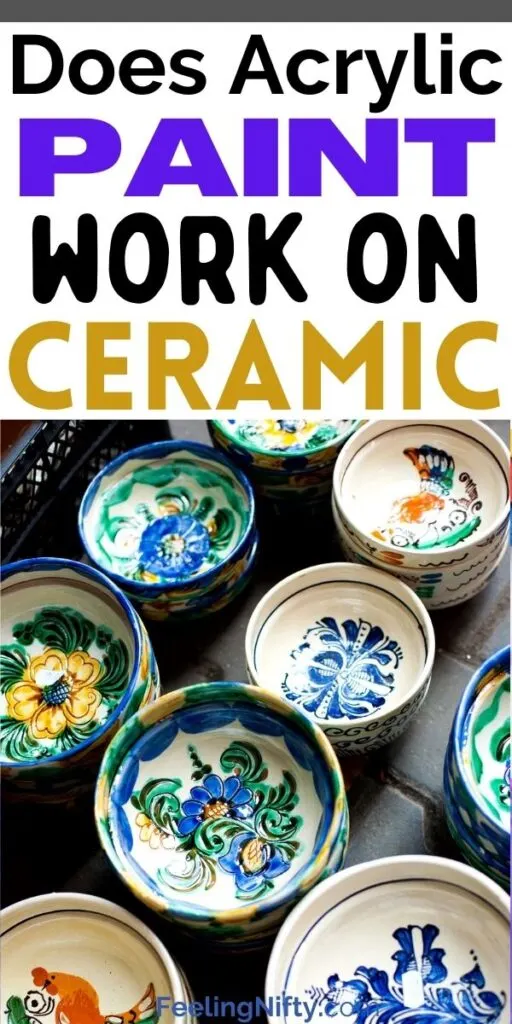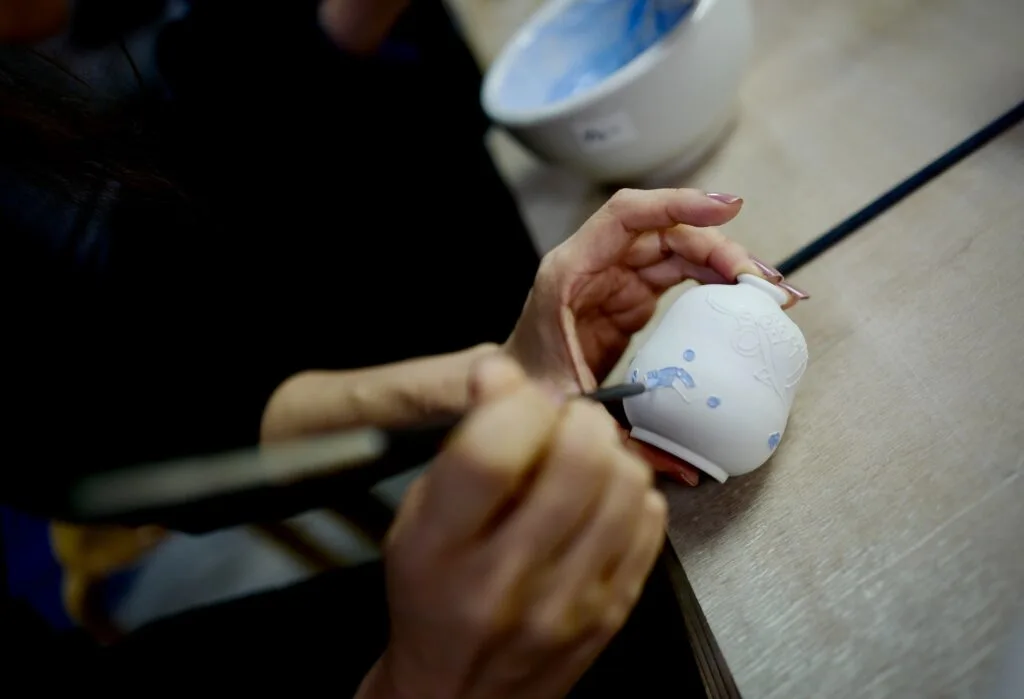Acrylics are a popular, easy-to-use, and affordable paint you can use to decorate almost any surface imaginable. Acrylic paint adds beautiful painted decorations to wood, glass, and canvases. But does it also work on ceramic?
Acrylic paint does work on unglazed ceramic, namely greenware and bisque-fired clay. However, regular acrylics won’t work on glazed ceramics, you’ll need to use specialized acrylics made for glazed ceramic and glass (see below). To decorate unglazed ceramic, use non-toxic acrylic paints that are oven, dishwasher-safe and food-safe (if applicable).
Disclaimer: the ceramics discussed in this article are for pieces that don’t come in direct contact with food/drink. Acrylics paints/sealers can pose food/health safety concerns when used on dish-ware, which is beyond the scope of this article.
In this article, I’ll explore more about what kinds of acrylic paint you can use on specific ceramics, how you can make sure your paint lasts, and offer you a few examples of pottery painting ideas that would look excellent on any type of ceramic.
Looking to learn more about the basics of acrylic painting? Check out this ultimate guide with acrylics for beginners post or 60 acrylic painting ideas.
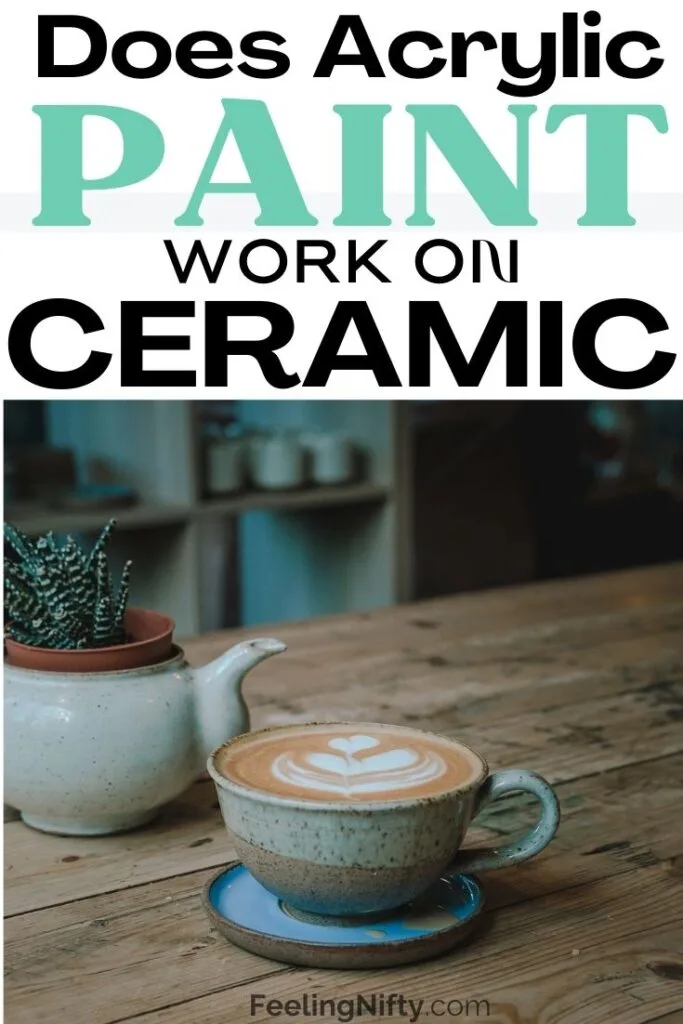
Types of Ceramic You Can Paint Using Acrylics
To answer the question, “does acrylic paint work on ceramic”, let’s first look at the different types of ceramics. You can use acrylic paint on unglazed ceramics. The surface of ceramics becomes very slippery when covered in glaze, meaning acrylic paint won’t stick to it permanently unless using specialized paints (more below).
There are several types of ceramic you can paint with acrylics. Knowing the difference between ceramic types will help you choose what kind you want to paint on.
Greenware Ceramics
Greenware ceramics are any ceramics that haven’t been fired in a kiln. Instead, they’re air-dried. Greenware ceramics are highly delicate. Because they’re so fragile, greenware ceramics are typically only used as display pieces.
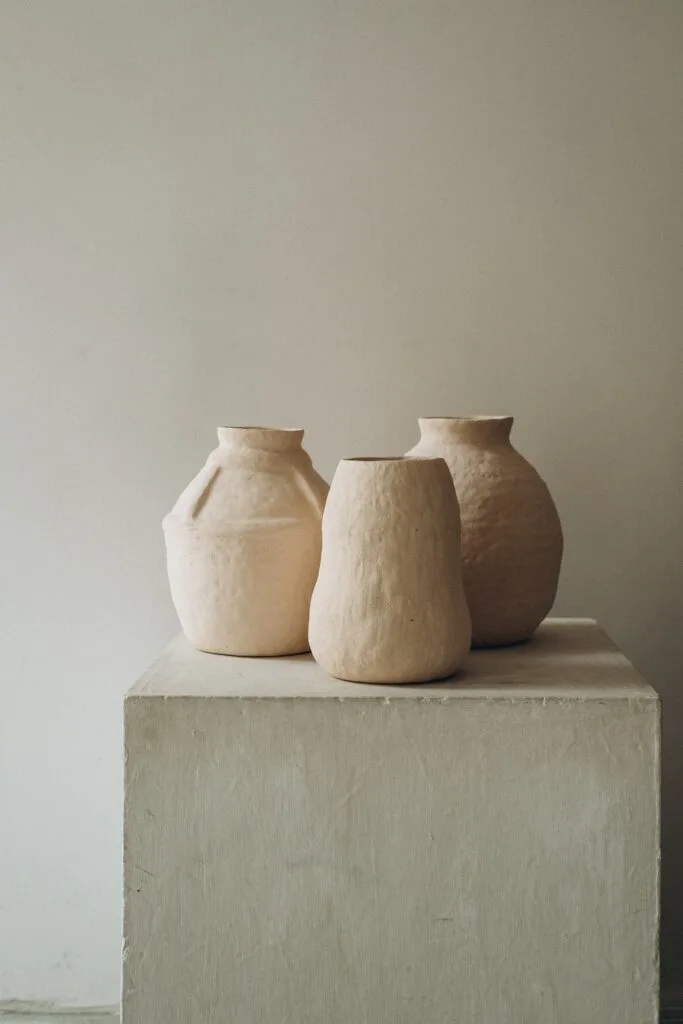
Because they haven’t been fired in a kiln, greenware ceramics will almost always be unglazed. The smooth and bare surface of greenware ceramics makes it an excellent choice for acrylic painting.
If you want to use acrylic paints on greenware ceramics, be sure to wipe the surface beforehand with a clean, wet cloth. Use non-toxic acrylic paint to create vibrant designs onto your preferred greenware.
Painting on a round surface can be intimidating for beginning painters. Check out my video to help you practice painting on a rock before you tackle the greenware ceramic:
Bisque-Fired Clay
Bisque-fired clay ceramics are unglazed like greenware, but they have been fired in a kiln. Firing the clay in a kiln strengthens it, making it far less delicate than greenware.
Because bisque-fired clay ceramics don’t have a layer of glaze fired into their surface, you can easily apply acrylic paint to it.
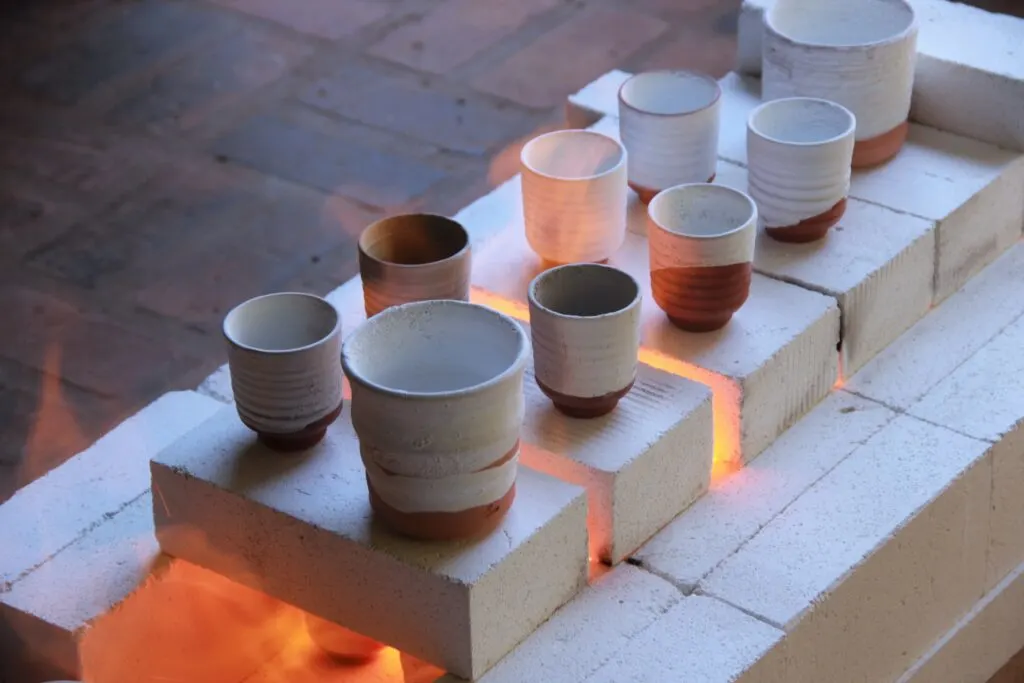
Unlike greenware, the process of kiln-firing makes the bisque-fired clay ceramic’s surface quite porous. The acrylic paint will absorb into its surface without any difficulty. Because acrylic paint is permanent, be sure to carefully apply the acrylic paint so it doesn’t bleed into unwanted areas.
Here are several things you can do to ensure acrylic paint stays on bisque-fired clay:
- Oven-bake your acrylic coating. Wait 24 hours after painting your ceramic with acrylics to bake it in an oven. Because high heat can crack your ceramic, only place your ceramic into the oven when it is cool, then increase the heat gradually. Baking your acrylic paint in the oven will secure it to your ceramic’s surface.
- Use acrylic paint designed for use on ceramics. Some acrylic paint is specifically designed for use on ceramics. These non-toxic and water-based acrylics will stay on your unglazed ceramics longer.
- Apply a varnish. A varnish will help seal in your acrylic paints permanently. However, most varnishes are not safe for dishes you wish to eat off of, so only use varnish on decorative or display ceramics.
To learn more about applying varnish to acrylic (and get some great additional details about this task), check out my step-by-step instruction video where I use my favorite varnish Liquitex Gloss Varnish:
Can I Paint Over Glazed Ceramics Using Acrylic Paint?
You cannot simply paint over glazed ceramics using regular acrylic paint because it needs a porous surface to adhere too, and glazed ceramics are not as porous as non-glazed ceramics. This type of acrylic paint can easily scratch off . But there are new acrylic paint products that are designed to work on glazed ceramics that you can use. Read the label for paints that state they work on “glazed ceramics or glass“. Also, the glaze on ceramics is incredibly slippery, and without first sanding or otherwise treating the surface, acrylic paint won’t adhere to it permanently.
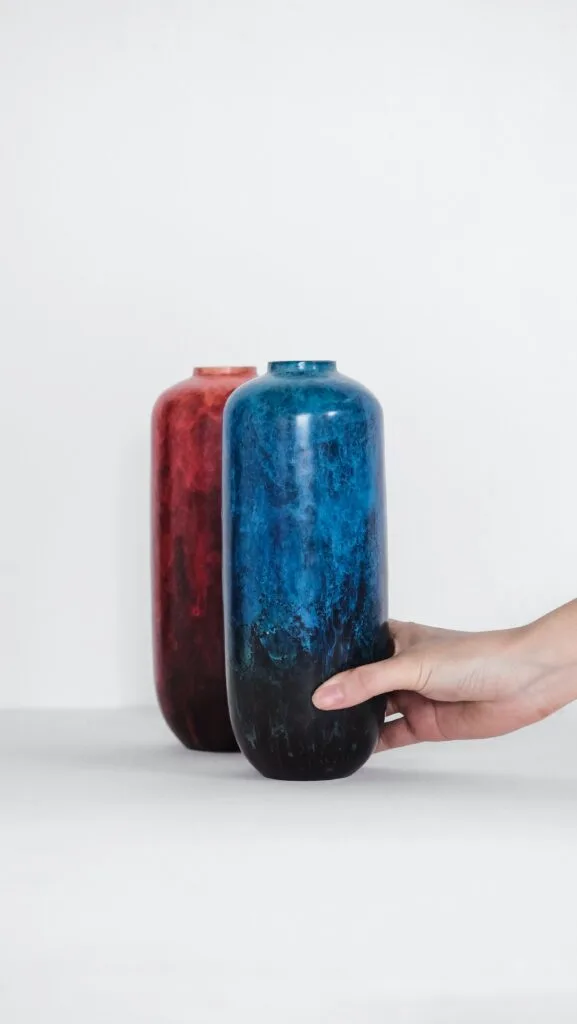
Ideas for Painting on Ceramics With Acrylics
You can paint any designs you can think of on unglazed ceramics using acrylics. Your creative options are limitless whether you are painting on figurines, pots, keepsakes, ornaments, trays, vases, pottery, etc.
You can also check out this 51 Pottery painting ideas for more inspiration too.
Here are a few design ideas you can easily paint on your ceramic:
You can also use acrylic paint on ceramics to make abstract designs and patterns. Children can also create designs on bisque-fired clay using non-toxic acrylic paint for a fun and creative activity.
If you need help determining what brushes to use to paint acrylic on your ceramics, try Paintbrush 101: Start Using Your Brushes with Intent & Confidence modules to learn which brushes you need to create the designs you want.
Final Thoughts
You can use acrylic paint to create eye-catching and beautiful designs on any unglazed ceramics. It’s best to use greenware, which are unfired ceramics, or bisque-fired clay, which has been fired in a kiln. To paint on glazed ceramics, you need specialized acrylic paints designed to work on unglazed ceramic surfaces.
Overall, you can use non-toxic acrylic paint to add decorations to display ceramic dishes. Also the ceramics discussed in this post are pieces that don’t come in contact with food/drink (which is beyond the scope of this article because of food/health safety concerns).
If you liked this post please pin it
